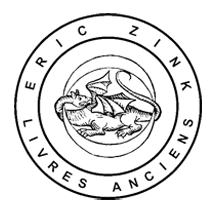

POLINIERE, Expérience de Physique, 1709

POLINIERE, Pierre.
Expériences de Physique.
Paris, Jean de Laulne, 1709.
12mo (168x94 mm), viii-508 pages and 10 folding plates. binding : Contemporary full sheep, gilt-decorated spine in six compartments. Head cap worn. Waterstain on last three plates.

First edition.
Pierre Polinière is considered the founder of experimental physics in France. After studying mathematics with Pierre Varignon (1654 – 1722), Polinière opened a physics course at the college of Harcourt, it was one of the first public courses given in Paris. His public demonstration sessions were very successful and did much to disseminate the scientific method of experimental research. His experiments were very popular and, among the spectators, we found all of Paris, and even the young Louis XV in 1722.
In 1706 during an experiment before the Academy of Sciences, Polinière discovered electroluminescence. This discovery is contemporary but independent of that of Hauksbee in London.
The protocol of the experiment is described here in the chapter “Phosphorus through Movement”.
references: DSB [XI, 67 :"In each of the editions Poliniere included an experiment that elaborated his discovery of the luminescence produced by rubbing partially evacuated glass containers. This discovery is usually attributed to Francis Hauksbee but was announced simultaneously and independently by Polinière"], Corson ["Pierre Poliniere, Francis Hauksbee, and Electroluminescence: A Case of Simultaneous Discovery", 1968], Dorbon [3713:"Avec à la fin, un atlas de 10 planches repliées représentant près de 300 instruments et accessoires de physique"].
Price : 950 €














